Top Takeaways and Key Concepts
→ Optimize content for voice search using natural, conversational phrasing.
→ Create engaging visual content to capture and retain audience attention.
→ Stay active on social media with consistent, meaningful interactions.
→ Deliver value through email so subscribers look forward to your messages.
→ Track performance data to refine strategies and improve results.
Summary of This Article
This article breaks down the fast-moving world of digital marketing and shows how to keep up without feeling overwhelmed. You learn why trends like short-form video, personalization, and voice search matter more than ever—and how to adapt your content so it connects naturally with real people. The article also highlights the importance of visuals, social engagement, and value-packed emails that subscribers actually want to read. Finally, it explains how tracking analytics helps you understand what really works across different platforms. By staying curious, flexible, and focused on your audience, you can navigate digital marketing with confidence and creativity.
Digital marketing is like the popular kid at school these days—everyone wants to be friends with it! There are so many things to look into, from funny things that happen on social media to email campaigns that people actually open. But how do you go around in this huge area without getting lost? Let’s look at the most recent trends and some useful advice that will help you become a digital marketing expert.
Contents of This Page
Understanding the Latest Trends in Digital Marketing
Isn’t it interesting how fast things change in the digital world? One minute, we love dazzling graphics and catchy jingles. The next, video content takes over like a train that won’t stop! Video marketing has become very popular. Short videos are now strong tools for getting people to interact thanks to platforms like TikTok and Instagram Reels. This trend isn’t just a passing fad; it’s changing how marketers talk to their customers.

It’s interesting that customisation is also becoming more popular. People love to feel unique. Who doesn’t like getting personalized suggestions? Businesses may use data analytics to make experiences that are unique to each customer and touch them on an emotional level. Imagine going to your favorite online retailer and seeing things that are suggested particularly for you based on what you’ve bought in the past or what you like. It feels like magic!
And we shouldn’t forget about optimizing for voice search. More individuals are asking queries out loud instead than typing them out because smart speakers are becoming more common in homes. It’s like having a personal assistant who hears everything you say, sort of! It might be time to rethink your strategy if your material isn’t ready for voice search yet.
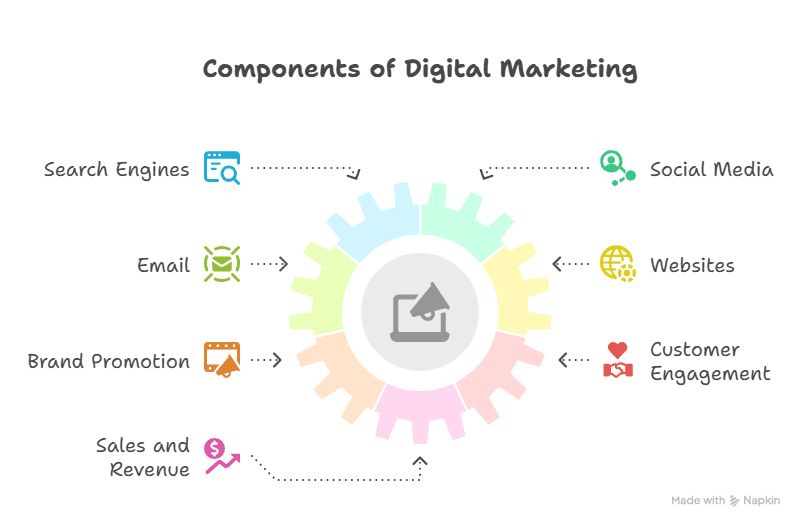
Think about how someone would ask a question out loud instead of typing it. We commonly utilize short forms or phrases when we type, such when we look for “best pizza near me.” But when we talk, we are more likely to say something like, “Hey Google, where is the best pizza place near me?” This small change in terminology can have a big effect on how easy it is for people to find you online. Voice searches are usually longer and more like a conversation than regular text searches.
You need to change your content to fit this. Add natural language to your blog and website postings as a first step. Use full sentences and phrases that sound like how people really talk. Instead of just utilizing the word “running shoes,” think about making content that answers queries like “What are the best running shoes for beginners?” This method is in line with how people use voice-activated devices.
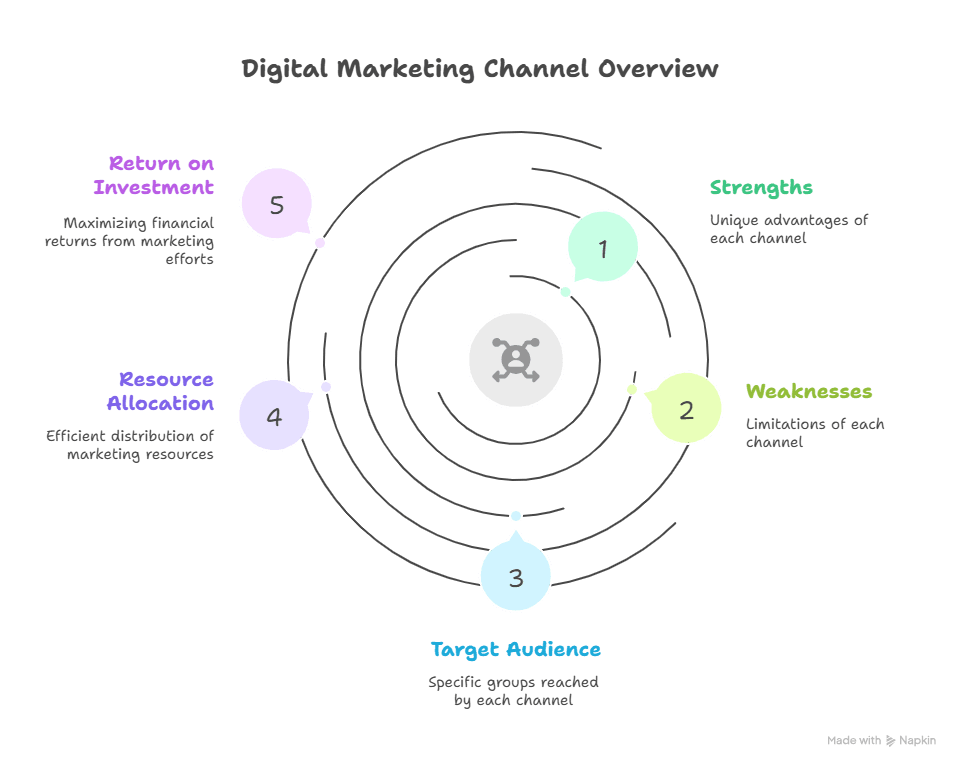
Also, if you want to get clients who live nearby through voice search, you need to focus on local SEO. A lot of voice searches are for things that are nearby, such services or items. Make sure that your business information is correct and up-to-date on all platforms. This way, when someone asks their device for suggestions, your name will be one of the first ones to come up!
Last but not least, don’t forget how helpful FAQs may be for your site. Making a separate FAQ section will help you answer frequent queries in a clear way and also make your site more search engine friendly for those long-tail keywords that people use when they search by voice. Also, it helps visitors find information more easily! So take some time to think about how you can change the content you already have or generate new content that is targeted for the emerging trend of voice search optimization. It might make a big difference in getting more visitors to your site and making their experience better!
Crafting Engaging Content That Captivates
Now that we know what’s going on with trends, let’s talk about how to make content that grabs readers’ attention right away. No one really wants to read something boring or too technical. It’s like having to eat plain oatmeal every morning! Instead, try to write information that is interesting and easy to relate to.

Telling stories is a great technique to get people to read. I mean, who doesn’t like a good story? Storytelling lets your point stick by sharing personal stories or providing examples from successful campaigns. Also, don’t be afraid to use comedy! A well-placed joke can make people feel better and make your brand seem more friendly.
Adding pictures can also make your article a lot better. Images are like sprinkles on a dessert; they make everything better! Visuals grab people’s attention and keep them interested, just like those bright toppings that make you want a tasty dessert. Our eyes naturally go to pictures, charts, and graphics when we skim through articles or blogs. This is where the magic happens!
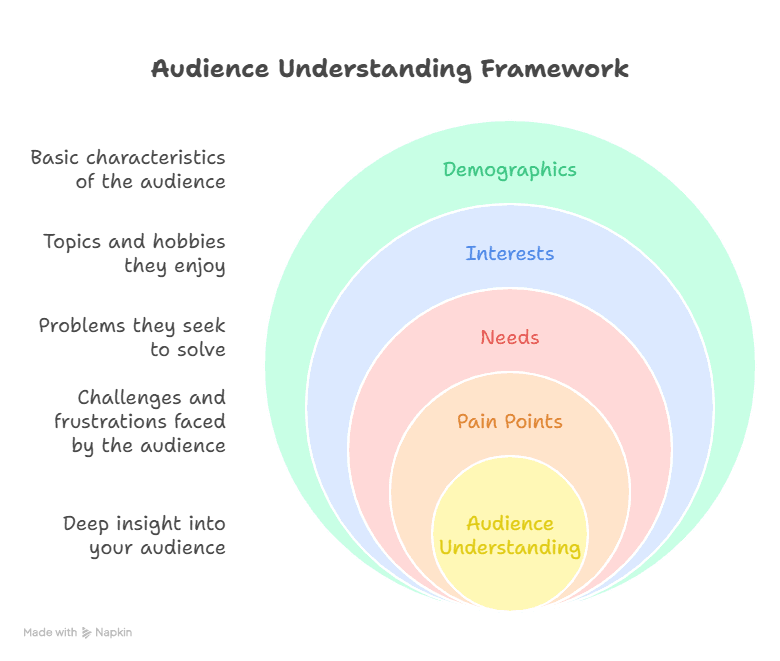
Infographics or pictures that capture the eye break up text and give useful information at a look. Have you ever tried to read a wall of text? It is as thrilling as watching paint dry! But if you add some colorful visuals or an infographic that sums up the main elements, the text suddenly seems easier to understand. Infographics are very effective because they employ pictures to create a story with data, which makes it easier to learn and remember.
Keep in mind that people comprehend pictures faster than words. Use this to your advantage! Studies demonstrate that our brains can interpret pictures in only a few milliseconds. Adding relevant images to your posts does more than simply make them seem better; it also helps your readers understand what you’re saying quickly. If you’re writing about trends in digital marketing, for instance, why not add a graphic that shows how social media engagement has changed over time? A short look at that picture could say what paragraphs of writing might not be able to.
And we shouldn’t forget about videos! Videos can be even more interesting than still pictures. They bring music and action to the table, which is like fireworks for your material! Adding video to a tutorial on how to use a product or an explainer movie about a service helps keep visitors’ attention longer than just text alone.
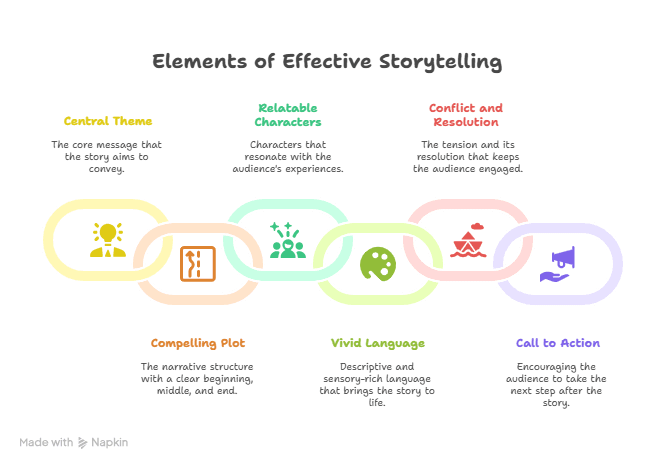
But it’s important to choose images carefully. Make sure the photographs are high-quality and related to your content. Blurry or unrelated images can make things harder for readers to understand. Also, don’t forget about making things easy to use. Adding alt text to images makes sure that everyone can enjoy what you’ve made.
In the end, employing pictures is no longer just an option; it’s almost required if you want to get noticed online! If you carefully add infographics, pictures, and videos to your content strategy, you’ll make it interesting enough that people will want to read more. So go ahead and put some sprinkles on. Your audience will love every bite!
Utilizing Social Media Effectively
When it comes to interesting information, social media is where the magic happens these days! It’s not enough to just upload lovely photographs; you need to have a plan and really talk to your fans. When you think about it, developing relationships on social networking sites leads to more people getting involved.

When running social media accounts, it’s important to remain consistent. Posting often keeps your audience interested and makes the algorithms work better. Yes, those annoying algorithms do matter! But remember that quality is more important than quantity. Instead of filling feeds with lousy updates, focus on making posts that matter.
Engagement works both ways! Like a dance, both people need to move in time with each other. When you respond quickly to comments or messages, it tells your followers that you care about what they have to say. And believe me, they appreciate it more than you know! Imagine putting something up and then waiting for a response, only to hear nothing. That might make you feel very alone, right? But when you take the time to answer, it’s like tossing a life preserver into the sea of social media insanity. People that follow you feel like they matter, and that connection is what makes them loyal.
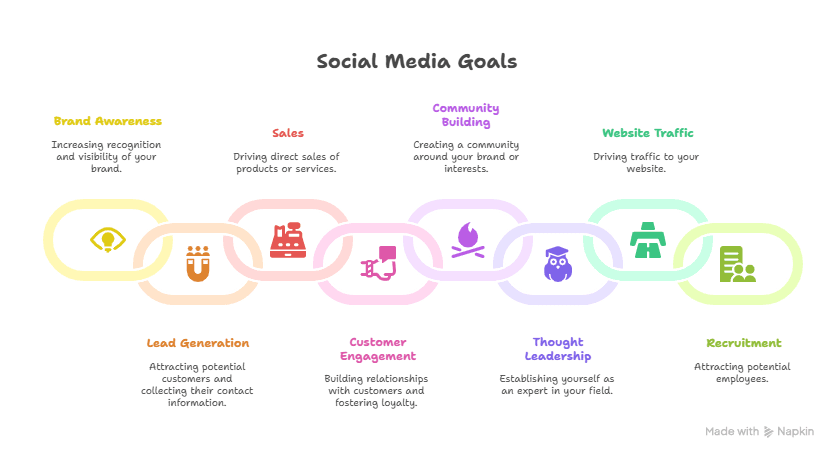
Let’s be honest: who doesn’t like to be recognized? When someone responds to my comment or question, it makes me feel all warm and fuzzy inside. It’s not enough to merely get people to watch; you need to develop a community where everyone feels welcome. Also, replying quickly can help keep misunderstandings or bad feelings from getting worse. A short “Thanks for your input!” or “Great question!” might help keep talks going in a good way.
You may also run polls or ask questions in your postings. This not only gets people talking, but it also shows you what your audience likes best. Instead of merely chatting to your followers, why not let them join the conversation? Polls are short and sweet ways for people to say what they like without having to write long answers. You may pose a basic question like, “Do you like videos or blog posts better?” The answers will help you plan your future content and make your followers feel like they are part of the decision-making process.
Questions can also start conversations! When you ask open-ended questions, you encourage your followers to contribute their opinions and experiences. For example, “What is the best advice you have ever gotten?” not only makes people think, but it also gives them a chance to tell stories. And who doesn’t like a good story? This kind of interaction turns passive readers into active participants, producing a lively atmosphere where ideas can flow freely.
Also, these interactions give you useful information about what your audience likes. If you see that some topics get a lot of comments and others don’t, like yesterday’s soda, pay attention! This information will help you make your material more relevant in the future.
So keep in mind that engagement isn’t only about sharing content; it’s also about building relationships with your audience. You’re making a space where everyone feels respected and heard by responding intelligently and encouraging interaction through polls and questions. And to be honest? That’s how real relationships are made online: one comment at a time!
Leveraging Email Marketing Like A Pro
People frequently forget about email marketing in favor of more flashy sites like TikTok or Instagram Stories, but believe me when I say it’s still really effective! Email is one of the digital marketing techniques with the best return on investment rates. Who wouldn’t want that?

Writing interesting subject lines is important since they are like bait that draws readers in (and no one likes old bait!). Be intelligent or perhaps a little mysterious. This will make people want to know more without using clickbait, which annoys everyone.
Once your emails are in their inboxes (insert evil laugh), make sure they offer more than just ads. This is how you should think about it: no one enjoys getting commercials that say “Buy me!” every five seconds. Instead, picture yourself sneaking into someone’s email like a pleasant neighbor bringing over a tray of cookies that just came out of the oven. You want to be the email people look forward to getting, not the one they delete right away!
What do you do to make this happen? It’s a great start to share useful tips about your field. If you’re in the fitness sector, instead of just sending out discount codes for workout gear, why you also give out some quick tips for working out or healthy recipes? These little bits of advice are like little gold stars that demonstrate you care about your subscribers’ interests and health. People love learning new things, especially when those items can help them in some manner.
On the other hand, adding intriguing facts that are relevant to your subscribers’ interests can actually make your material more interesting. For example, if you know that your audience is interested in digital marketing trends, you may give recent statistics or case studies that show how successful techniques have worked. This makes you look like an authority in your subject and makes your audience believe you. People are far more inclined to buy what you’re selling later on if they think you’re smart and trustworthy.
You might also want to include personal experiences or anecdotes that go along with the recommendations you’re giving. A nice story is something everyone likes! It makes the content easier to understand and builds a relationship between you and your readers. You might have had an unpleasant event at the gym or learned something useful from a marketing effort that didn’t work. Sharing these stories makes you more relatable and indicates that there is a real person behind all the knowledge.
And don’t forget about pictures! Adding infographics or pictures that attract the eye can make emails with a lot of text easier to read and give useful information at a glance. A well-placed graphic can make a message clear or make hard-to-understand material easy to understand. Plus, it makes people more interested—who doesn’t like skimming through bright pictures?
Finally, always include a clear call to action (CTA) at the end of your emails. Ask them to express their opinions on the ideas you gave or suggest that they look at more resources on your website. This not only encourages conversation, but it also keeps them interested long after they’ve read your email.
In short, remember that giving value is the most important thing once you’ve made it into those important inboxes! You can make emails that keep people coming back for more by giving them useful suggestions and intriguing information, adding personal touches, and using engaging pictures. This will make people want to read your emails again and again, like moths drawn to the light of knowledge.
Analyzing Your Efforts: Data Is Your Friend
Now it’s time for my favorite part: looking at the results! At first look, tracking metrics may seem boring (like watching paint dry), but really? It gives you important information about what is working and what needs to be changed along the route.

Tools like Google Analytics can tell you which sites bring in the most visitors or if specific advertising don’t work as well as you thought they would (insert dramatic music). You’ll save time and money in the future if you keep an eye on these data instead of guessing at what worked in the past.
Also, it’s important to keep a watch on how users act on different channels. It’s like picking the best place to fish; not every lake has a lot of fish! Some businesses do well on Instagram by posting colorful pictures and interesting tales, while others do well on LinkedIn, where professional networking and thought leadership are the main focus. Knowing where your audience interacts the most will help you make your future marketing efforts far more effective.
Let’s take this apart a little bit. Every social media site has its own feel and group of people who use it. Instagram is all about beautiful pictures and stories, so it’s great for firms that can show off their products in a way that looks good or make lifestyle content that connects with people on an emotional level. Fashion, beauty, and travel firms do well here because they can instantly grab people’s attention with eye-catching pictures and videos.
LinkedIn, on the other hand, works in a completely different area. It’s less about stunning photographs and more about being professional and knowing what’s going on in your field. If you sell to businesses or offer services like coaching or consulting, you will probably have more success providing useful articles, case studies, or even talking about trends in your field. This tool lets businesses build authority by sharing useful information instead of just flashy ads.
To properly make the most of these platforms, you need to look closely at the statistics on how users behave. Check out indicators like engagement rates (likes, shares, comments) to determine which content get the most response from your audience on each channel. Are people more likely to reply to videos on Facebook? Or do they like getting instant tips on Twitter? By going into these specifics, you can adjust your content approach to fit each platform better.
You might also want to think about adopting technologies that keep track of how users connect with you on different channels. These metrics can show you patterns across time. For example, maybe your followers are most active on Instagram on Mondays, and your LinkedIn connections are most active on Wednesdays. You can use these patterns to make the best publishing times and sorts of content.
Another key thing to know is who uses each platform and what their demographics are. For instance, TikTok is mostly for younger people, while Facebook is for people of all ages, although it might be more appealing to older people who want to join community organizations or get news updates. When you match your business model with the correct platform, you don’t just cast a wide net; you also target specific groups of people who are more likely to become consumers.
Lastly, don’t forget to try new things! Try out different kinds of content on different platforms to discover what works best. For example, an infographic can do well on Pinterest, while a live Q&A session might do great on Facebook Live! The most important thing is to be flexible. Change your approach based on what you learn from comments and results so you can keep improving.
In short, knowing how users act on different channels will help you target your efforts where they will have the most effect. Not every platform is right for every business strategy! By looking at engagement data and making sure that your content strategies match what your audience wants on each channel, you’ll be able to improve your digital marketing efforts and make them more successful!
Conclusion: Embrace Change & Stay Curious
Digital marketing changes all the time, much like fashion trends do (goodbye low-rise jeans!). To really do well in this industry, you need to stay interested in new technology and fully accept new ideas at every step you take toward reaching your initial goals!
Whether you’re plunging headfirst into making videos or trying new things on social media, the most important thing to remember is to adapt quickly yet carefully since things change around us every day.
Suggested External Resources
Digital Marketing Trends 2023
https://www.digitalmarketingtrends.com/2023-trends
The Ultimate Guide to Email Marketing
https://www.emailmarketingguide.com
How Voice Search Impacts SEO
https://www.voicesearcheffect.com
Content Creation Strategies for Engagement
https://www.contentcreationstrategies.com
Social Media Best Practices
https://www.socialmediabestpractices.com
Frequently Asked Questions
Why is video content so important in digital marketing?
Short-form video captures attention quickly, increases engagement, and aligns with current user behavior across major social platforms.
How does personalization improve digital marketing results?
Personalized content feels more relevant, increasing user trust, engagement, and conversion rates across digital channels.
Why should I optimize my content for voice search?
Voice search queries are conversational and growing rapidly, so optimizing helps your content appear in more spoken search results.
How can visuals improve my marketing content?
Images, infographics, and videos make content easier to digest, increasing retention and boosting user engagement.
What role does social media engagement play in marketing success?
Responding to comments and encouraging discussion builds community, strengthens relationships, and increases visibility.
Why is email marketing still effective today?
Email remains a high-ROI channel because it delivers personalized, valuable content directly to subscribers who opted in.
How does tracking analytics improve digital marketing?
Analytics reveal what content works, where users engage, and which strategies need adjustment for better performance.

Kevin Collier is a seasoned writer and technology enthusiast with a passion for exploring the latest industry trends. With a background in digital marketing and content creation, he brings insightful perspectives to imhits.com on emerging technologies, innovations, and their impact on everyday life. When he’s not writing, Kevin enjoys experimenting with new gadgets and sharing his knowledge with fellow tech aficionados.





